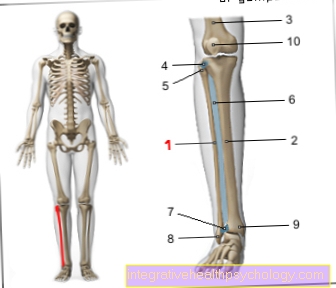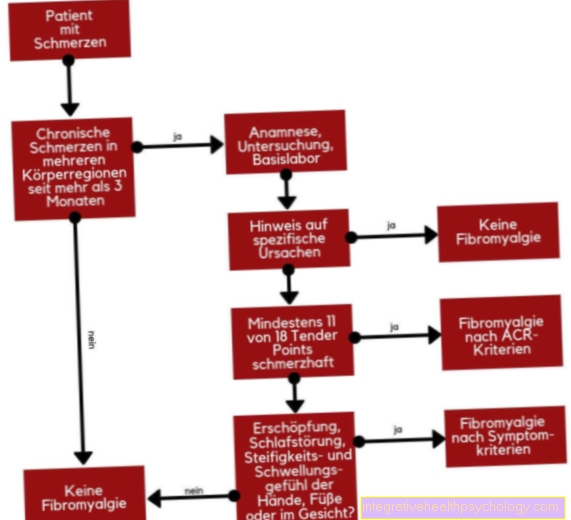Teeth-supporting apparatus
What is meant by the tooth support apparatus?
The tooth holding apparatus, also known as the periodontium, describes the structures that fix the tooth in the jaw. This means that the root of the tooth is not simply in the jaw, but is anchored in the tooth-holding apparatus. The roots of the teeth are located in bone compartments, the so-called alveoli. The tooth-holding apparatus represents the attachment of the roots in the bone compartments. The portion of the upper or lower jaw bone that houses the bone compartments is called the alveolar process. In addition to the anchoring of the tooth, the tooth-holding apparatus ensures damping of the forces acting on the teeth, which can arise, for example, when biting firmly.

Teeth-supporting system anatomy
The parts that make up the tooth support system as a unit are:
1. Alveolar process (processus alveolaris)
2. Root cement
3. Periodontal membrane (periodontal tissue)
4. Gums (gingiva)
The root of the tooth is covered by the cementum dentis. Towards the tip of the root, this is stronger than towards the top of the tooth crown. With regard to the location, one can differentiate between different cement compositions. The periodontal membrane fills the 0.1-0.3 mm gap between the root cement and the alveolar bone. The periodontal membrane consists of tight, collagenous connective tissue, the so-called Sharpey fibers. The fibers pull back and forth between the cement and the bone and thus ensure that the tooth is actually anchored in its alveolus (bone compartment). Furthermore, nerves and blood vessels run in the periodontal membrane, which move into the tooth and pulp at the tip of the root and supply the tooth. The gums (gingiva) surround the tooth crown (the part of the tooth that can be seen in the mouth) like a cuff. It is also part of the tooth support system. It is inverted towards the root of the tooth, so that a small furrow is formed in the depth. This is called a gingival pocket. If the gums and the periodontium are in good health, this pocket should not be deeper than 2-3 mm.
Read more about:
- Gingival pocket
- Pulp
Function of the tooth supporting apparatus
The periodontium is essential for the fixation of the tooth in the jawbone. For this reason, the unit made up of the four different components is also referred to as the tooth-holding apparatus. The Sharpey fibers that form the periodontal membrane ensure firm anchoring between the root cement surrounding the root and the alveolar bone. Thousands of these collagen fibers are arranged criss-cross in the gap between cement and bone in order to guarantee a hold against the forces coming from different directions.
Furthermore, the periodontium serves as a sensory organ. This means that it can regulate the chewing pressure through nerve fibers running in the periodontium and thus avoid damage to the tooth-supporting apparatus or the tooth. Another function of the tooth support system is the defense against germs. So to a certain extent it can prevent the invasion of pathogens. Finally, the periodontium ensures continuous remodeling of the jawbone.
Function of the collagen fibers in the tooth support system
The collagen fibers that are part of the periodontal membrane are called Sharpey fibers. They radiate into the root cement and the alveolar bone on both sides. So they serve to resiliently fix the tooth in its bone compartment (alveolus) and thus absorb the chewing pressure. In dentistry, the fibers are differentiated according to their course: Fibrae dentoalveolares (running from the tooth to the alveolus), Fibrae dentogingivales (running from the tooth to the gum), Fibrae alveogingivales (from the alveolus to the gum) and the Fibrae circulares.
Pain in the tooth support system
Inflammation of the gums (gingivitis) is one of the most common diseases of the periodontium. This is often caused by poor oral hygiene and the resulting deposits. Gingivitis manifests itself as redness, swelling and tenderness of the gums. Gingivitis does not go away on its own.
Read more about:
- Gums
- Inflammation of the gums
If left untreated, gingivitis can lead to periodontitis, i.e. inflammation of the periodontium. Another disease is the so-called periodontal disease. It is not, as is often wrongly called in the vernacular, the same as periodontal disease. The ending - itis is a name for an inflammation. The ending - ose describes a disease without inflammation. Periodontitis is a non-inflammatory regression of the gums. As a person affected, you don't feel any pain. Often one speaks of recessions instead of periodontal disease.
Also read:
- Periodontosis and Periodontitis
- Healing of periodontal disease
Inflammation of the periodontium
Probably the best-known disease of the periodontium is an inflammation-related, progressively destructive disease called periodontitis. Periodontitis usually arises from a simple inflammation of the gums (gingivitis). If left untreated, periodontitis leads to the destruction of the bone, with the tooth loosening in the long term and losing its hold in the bone compartment. In the long term, it can then be lost. The dental nerve may also become inflamed. Periodontitis can be caused by poor oral hygiene and the resulting bacterial plaque.
Furthermore, smoking, stress, diabetes and hormonal changes (e.g. during pregnancy) are among the risk factors for the development of periodontitis. The symptoms of periodontal disease are frequent bleeding gums, swollen and receding gums, reddened gums, loosened teeth or strong persistent bad breath. The dangerous thing about periodontitis, however, is that often none of the symptoms mentioned occur and the periodontitis can develop over a long period of time. The aim of a dental treatment in 6 sessions is to stop the inflammation and ensure that the tooth is preserved.
For more information, see: Periodontitis
Read more about:
- Periodontosis and Periodontitis
- Causes of Periodontal Disease
- Periodontal treatment
- Healing of periodontal disease
Bacteria of the oral cavity
A large number of different types of bacteria exist in the oral cavity, which are either harmless or even useful for humans. An inflammation of the gums can develop when the amount of these bacteria increases extremely due to poor oral hygiene.
For more information, see: Inflammation of the teeth supporting structures (periodontitis)
The lack of removal of the plaque causes tartar to form over time. This then promotes the growth of plaque in the direction of the tooth root. There is a gap between the gum and the tooth root - a gum pocket is created. This gingival pocket represents the perfect and protected habitat for bacteria. Toxins from the bacterial metabolism can penetrate the gums and trigger defense reactions. There are also strong and very aggressive bacterial complexes that can lead to progressive destruction of the teeth supporting structure.
Read more about:
- Tartar
- Removal of tartar
- How can you remove tartar yourself?
- Gingival pocket
How can I improve my teeth supporting system?
Sufficient and extensive oral hygiene always lays the foundation for a healthy and long-lasting tooth support system. It is therefore particularly important to always make sure that you invest enough time in your own oral and dental care.
The more advanced the periodontal disease, the more difficult it is to repair the damage. However, a complete restoration of the original state is only possible if the disease of the tooth supporting apparatus has not yet progressed far. In addition to good oral hygiene, those affected can try to strengthen the bones and the hard tooth substance with appropriate preparations. You should get advice from your treating dentist. It is also very important to remove harmful bacteria from the oral cavity. Either an antibiotic prescribed as part of a periodontal therapy can help, or oil pulling at home, which has proven its worth. Furthermore, there has been a so-called periodontal cream on the market for a short time, which is supposed to strengthen the tooth supporting apparatus. Foods that contain minerals can also help to strengthen the tooth support system.
This might interest you:
- Oral hygiene
- Proper dental care
- Professional tooth cleaning
- Professional teeth cleaning - how often is it necessary?
- Buying a dental care set - makes sense?
You might also be interested in:
- Tooth structure
- Tooth root
- Pulp
- Dental nerve
- Gums
- Gingival pocket
- Tooth neck is exposed - what to do?
You can find more information about diseases of the gum tissue at:
- Periodontosis and Periodontitis
- Causes of Periodontal Disease
- Periodontal treatment
- Healing of periodontal disease





























